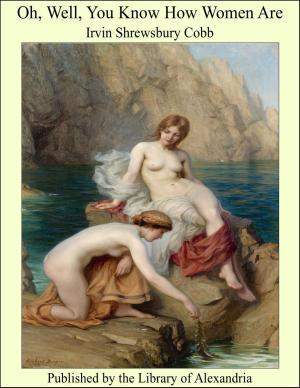A Guide to the Scientific Knowledge of Things Familiar
Nonfiction, Religion & Spirituality, New Age, History, Fiction & Literature| Author: | Ebenezer Cobham Brewer | ISBN: | 9781465626035 |
| Publisher: | Library of Alexandria | Publication: | March 8, 2015 |
| Imprint: | Language: | English |
| Author: | Ebenezer Cobham Brewer |
| ISBN: | 9781465626035 |
| Publisher: | Library of Alexandria |
| Publication: | March 8, 2015 |
| Imprint: | |
| Language: | English |
Of all science, none is more generally interesting than that which explains the common phenomena of life. We see that salt and snow are both white, a rose red, leaves green, and the violet a deep purple; but how few persons ever ask the reason why! We know that a flute produces a musical sound, and a cracked bell a discordant one—that fire is hot, ice cold, and a candle luminous—that water boils when subjected to heat, and freezes from cold; but when a child looks up into our face and asks us “why,”—how many times is it silenced with a frown, or called “very foolish for asking such silly questions!” The object of the present book is to explain about 2000 of these “silly questions” (which are often more easily asked than answered) in language so simple that a child may understand it, yet not so childish as to offend the scientific; and in order that the answers may be strictly correct, not only the most approved modern authors have been consulted, but the manuscript has been submitted sheet by sheet to the revision of two gentlemen of acknowledged reputation for scientific attainments. To the Rev. A. Bath Power, M. A. especially, great obligation is due, for a careful revision of the whole manuscript, for many excellent hints, and useful additions. In conclusion, so much diligence has been bestowed upon this little work for nearly ten years, so much useful information has been supplied by scientific friends, and so minute a revision has been made of every answer, that it is no presumption to express a hope that this “Guide to the Scientific Knowledge of Things Familiar” will become generally useful and acceptable, not only to the young, but to those advanced to maturer life. In this work some questions occur more than once, because they serve to illustrate different principles; and whenever cognate questions occur, the answers have been rendered as similar as possible, in order to assist the memory of the learner.
Of all science, none is more generally interesting than that which explains the common phenomena of life. We see that salt and snow are both white, a rose red, leaves green, and the violet a deep purple; but how few persons ever ask the reason why! We know that a flute produces a musical sound, and a cracked bell a discordant one—that fire is hot, ice cold, and a candle luminous—that water boils when subjected to heat, and freezes from cold; but when a child looks up into our face and asks us “why,”—how many times is it silenced with a frown, or called “very foolish for asking such silly questions!” The object of the present book is to explain about 2000 of these “silly questions” (which are often more easily asked than answered) in language so simple that a child may understand it, yet not so childish as to offend the scientific; and in order that the answers may be strictly correct, not only the most approved modern authors have been consulted, but the manuscript has been submitted sheet by sheet to the revision of two gentlemen of acknowledged reputation for scientific attainments. To the Rev. A. Bath Power, M. A. especially, great obligation is due, for a careful revision of the whole manuscript, for many excellent hints, and useful additions. In conclusion, so much diligence has been bestowed upon this little work for nearly ten years, so much useful information has been supplied by scientific friends, and so minute a revision has been made of every answer, that it is no presumption to express a hope that this “Guide to the Scientific Knowledge of Things Familiar” will become generally useful and acceptable, not only to the young, but to those advanced to maturer life. In this work some questions occur more than once, because they serve to illustrate different principles; and whenever cognate questions occur, the answers have been rendered as similar as possible, in order to assist the memory of the learner.















